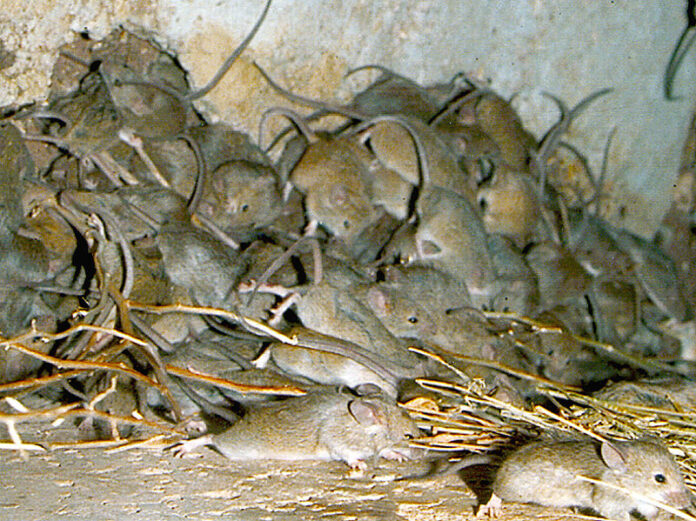
A plague of mice pillaging cropping farms in parts of NSW and Queensland has ACT residents nervously watching for a flow-on effect in the number of critters around the house.
Anecdotal social media reports of dogs digging up mice in Tuggeranong, cats offering them up as gifts in Palmerston, full traps and the pitter patter of tiny claws inside ceilings across the Capital Territory had local pest control services wondering whether they should expect an influx of calls this week.
Canberra Pest Control operations manager Brett Mitchell said there was an increase in the number of requests for rodent extermination recently; however, he didn’t believe the myth Canberra was on the cusp of its own mouse plague.
“Typically, you would receive more calls mid-autumn towards winter and over winter,” he said.
Although he takes calls about rodents year-round, Mr Mitchell conceded 2021 was a good year for mice and rats.
“It has seemed a little busier on those calls earlier than usual.
“Where there’s rain and growth there’s breeding.
“I’ll know more in probably a month or two, once I see what’s happening.”
Roger McMahon of A1 Bird and Possum Proofing – who also deals with mice – said he thought he would see more pests because of the plague out West, although they hadn’t reared their tiny heads yet.
“I mainly deal with larger rodents,” he said.
“This time of year, there is a natural increase when the weather gets colder.
“If I was a mouse, I’d choose a house over a hole in the ground.”
Despite being better acquainted with the house mouse than most, Mr McMahon said they were difficult to predict.
“I’d like to sit down and talk to them for half an hour or so, because I don’t quite understand their behaviour – they’re quite erratic.”
Although there was no specific monitoring program for mice and rodents at the ACT Environment, Planning and Sustainable Development Directorate (EPSDD), a spokesperson said EPSDD had not received reports of increased mouse activity.
Canberrans on the outskirts will be relied upon to sound the alarm if this changes.
“Despite not having a specific monitoring program, the Directorate does have extensive contact with the rural lessees who act as early surveillance for issues of concern such as mice,” a spokesperson said.
“Similarly, the Directorate has a broad range of staff operating in the national parks surrounding Canberra and there have been no reports from them on increased mice activity.”
EPSDD liaises with interstate colleagues on new and emerging biosecurity issues and is aware of increasing mouse populations in NSW.
If mice make their way to the national capital to create a two-year quadfecta of fire, flood, pandemic and plague, the EPSDD will decide next steps on the fly.
“The Directorate will continue discussions with our interjurisdictional colleagues and consider what actions can be applied locally if required,” a spokesperson said.
Meanwhile, mouse activity is very high in parts of the Central West and northern NSW and moderate to high elsewhere, according to a March report.
Researchers said it was unclear what impact flooding rains had on mouse populations and it was predicted mice would reach a peak in late autumn, which will coincide with the sowing of winter crops.
NSW Farmers president James Jackson said immediate action such as rebates and special baiting permits was needed to minimise damage, with crucial winter crop planting around the corner and with seasonal conditions conducive to another bumper crop.
For more news:








